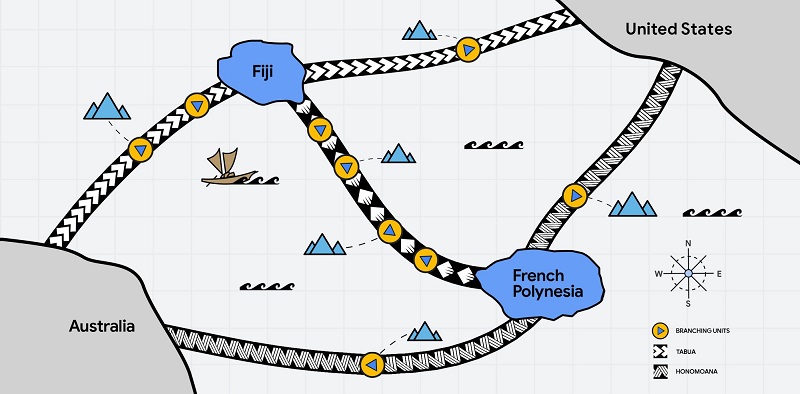Google has announced its South Pacific Connect initiative, which will deliver two new transpacific subsea cables — Honomoana and Tabua — to help increase the reliability and resilience of digital connectivity in the Pacific.
Honomoana, named after the Polynesian word for “link” (hono) and “ocean” (moana), will connect the United States of America and Australia to French Polynesia while Tabua, named after the sacred Fijian whale’s tooth, will connect the United States and Australia to Fiji.
As part of the plan, Google will construct physically diverse cable landing stations in Fiji and French Polynesia.
“The Government of Fiji is delighted to partner with Google in achieving this momentous milestone to bolster digital connectivity and resilience. Our shared vision is to pave the way for a more interconnected and fortified digital future not only for Fiji but also for the entire Pacific region and beyond,” Prime Minister Sitiveni Rabuka said.
“Through this partnership, we aim to leave behind a lasting legacy of economic growth, skill development, and progress that extends its benefits to all,” he said.
“Fiji expresses its profound gratitude to Google for this collaboration and reaffirms its unwavering commitment to support this transformative initiative, dedicated to fostering peace, prosperity, and a brighter future for our people and the broader global community.”
Supporting the initiative, Fiji International Telecommunications (FINTEL) CEO George Samisoni said: “This will strengthen Fintel and Fiji’s telecommunications hub status and provide the much needed reliable and resilient connectivity between the people of the Pacific and the rest of the world.”
The South Pacific Connect initiative will create a ring between Australia, Fiji and French Polynesia.
“This ring will include pre-positioned branching units that will allow other countries and territories of Oceania to take advantage of the reliability and resilience resulting from the initiative. This is one of the first projects of its kind in the Pacific, providing the ability to bring redundant international connectivity to a region that is susceptible to natural disasters,” Brian Quigley,Vice President Global Network Infrastructure at Google Cloud said.



